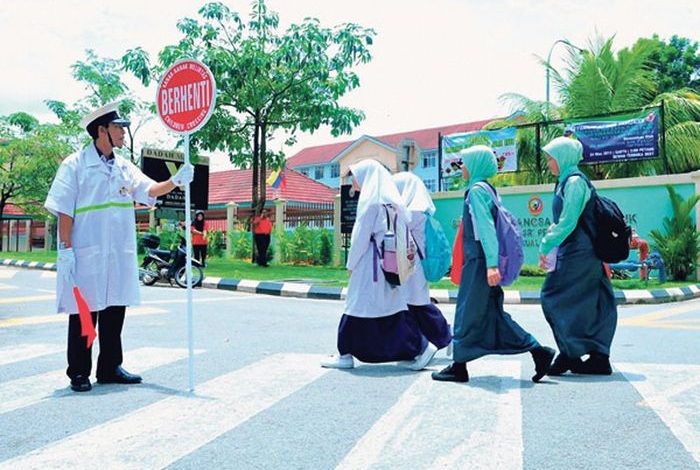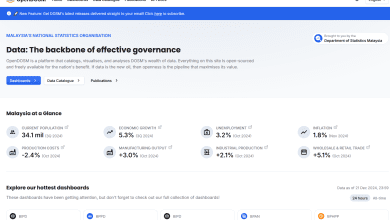What is being done about traffic in front of schools?


By Mariam Mokhtar
In a typical road-side scene, in Malaysia, school children gather at a bus stop to cross the road to school. A man, presumably in the employ of the school, wearing a yellow reflective shirt, waves a flag to urge motorists to stop for the children.
As is normal in Malaysia, no-one really takes any notice. Kapchais weave round the school children, and lorries, simply mow them down.
This is what happened to 11-year-old Mohamad Haikal Helme, who was run over by a trailer, as he was crossing the road, in front of his school, SK Telok Medan, in Bagan Serai, last month. The tragedy unfolded in front of his mother, who had moments earlier dropped him off at school.
The video recording shows a trailer speeding, in what is clearly a school designated area. Did the driver slow down, when he saw hordes of school children crossing? No! He drove past the school gates at speed. Mohamad had little chance of survival and died at the scene.
This is not the first incident involving school children, nor will it be the last. When will there be a holistic effort to improve traffic manners outside our schools? Most of our cities and large towns grew around schools, which existed before the urban sprawl began.
Sometimes, it is neither feasible nor possible to relocate the school, to the suburbs. The least we can do, is to have better crowd and traffic control. It involves the participation of the relevant ministries, school, parents, police, Road Transport Department and the council. Roads are normally chaotic, at around the time children are dropped-off or picked-up from school.
Parents can also be a nuisance, when they block the roads, with their cars, as they collect their children. Why don’t some parents make a car pool? They would save time and money.
Buses and mini-buses also block the roads, as they park waiting to collect the pupils from school.
Children who bicycle or walk to school, have a problem negotiating the heavy traffic. They cannot cross safely, because their view of oncoming vehicles is blocked by the cars and buses.
Children on bicycles must feel that they put their lives in their hands. Few places in our towns and cities have dedicated bicycle lanes. When there is one, it is often used by a kapchai or car, just as the emergency lanes on our highways are often abused.
What should be done about the traffic in front of our schools, at peak times? Should there be a ban on heavy traffic and articulated lorries at certain times of the day?
There should be a zebra crossing, with a Belesha Beacon to indicate to road users that they are approaching a zebra crossing. At peak times, the flag man, can wave his visible flag, to signal to motorists that he will be leading a group of children across the road, and all road users, including bicycles, must stop at the zebra crossing.
The council and Road Transport Department should run a series of promotional adverts, on television, to inform road users of the purpose of the “flag-man” in front of a school. He is there to allow school children to cross safely.
In some places, people tend to avoid the congested roads in front of the school, when the school opens and when it closes. It is not always possible to avoid these roads, but why can’t some drivers show some consideration to all road users?
What are the statistics for injuries and fatalities, involving school children near school gates? What is the police’s response to these incidents? What is the reaction of the Parents-Teacher’s Association (PTA) to the death of Mohamad Haikal? What will the Education and Transport Ministries do to address the problem of reckless driving in front of schools?
If motorists refuse to slow down and heed the advice of the police and council, there should be plans for a traffic ban around the schools, at drop-off and pick-up times.
It is impossible to encourage the healthy habit of walking or cycling to school, when road users do not care about road safety. The ban should also help reduce pollution levels and reduce congestion in these areas, during these times.
The ban may be inconvenient, but how else would we make road users more considerate and observant of traffic rules? It may be the only solution to help save our children’s lives.
In the past, the local government has said it was his fate to be killed on the road. Nothing can change one’s fate.


